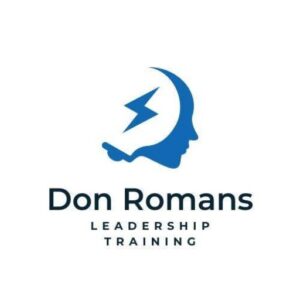Across every organization, meticulous documentation lies at the heart of effective employee management. Employee documentation is an essential component that underscores an organization’s ability to efficiently manage, evaluate, and comply with stringent labor laws. This multi-layered topic is characterized by various forms such as performance assessments, employment agreements, disciplinary records, and much more, each bearing significant importance and legal obligations. Thus, an insightful understanding of these processes should be a priority for organizations aiming for sustainable growth and legal adherence.
Understanding Employee Documentation
Understanding Employee Documentation: The Basics
Employee documentation is a vital part of any successful organizational structure, as it diligently keeps track of an employee’s life cycle from the point of hiring till their departure from the organization. This process aids in maintaining transparency, ensuring legal compliance, protecting the company and its employees from legal complications, and establishing a conventional method for handling common workplace transactions.
Different Types of Employee Documentations
- Employment Contracts: This is the basic document confirming the employee’s appointment. It includes essential information such as work hours, salary, benefits, and employee rights and responsibilities.
- Performance Evaluations: These are records of an employee’s work performance, which are used for promotions, bonuses, and in some cases, terminations.
- Training Records: These provide proof that an employee has received necessary training to perform their job. They’re also helpful in showcasing an employee’s progression and skill improvement.
- Disciplinary Action Records: These document issues related to misconduct, disciplinary actions taken, and the outcomes of those actions. They can be useful in resolving disputes and for legal defenses if needed.
- Attendance and Leave Records: These track an employee’s work hours, overtime, attendance, and vacation or sick leaves.
- Separation Documents: These include resignation letters, termination notices, and records of exit interviews.
Legal Aspects of Employee Documentation
As per the U.S. Department of Labor, employers are required to keep certain documentation for each employee. For example, the Fair Labor Standards Act (FLSA) requires employers to maintain records like employee’s full name, address, occupation, hours worked each day and total hours worked each week, regular pay rate, total daily or weekly regular earnings, and total overtime earnings for the workweek.
The Family and Medical Leave Act (FMLA) mandates the conservation of documents related to employee’s leave, medical certifications, disputes related to leave, etc. Other laws like The Occupational Safety and Health Act (OSHA) also have specific requirements about maintaining records related to workplace injuries, illnesses, and safety training.
The Significance of Thorough Employee Documentation
Accurate and complete employee documentation plays an essential role in making well-informed decisions regarding promotions, terminations, dispute resolutions, legal defenses, and inquiries about former employees. It ensures the continuity and professionalism of your workforce.
Contrarily, inadequate documentation can result in confusion, inconsistent treatment of employees, and potential legal difficulties. Therefore, it’s not merely the possession of documentation that matters, but the accuracy and completeness of these records that truly make a significant impact.
The foundation of successful employee documentation rests on consistency, precision, and adherence to pertinent laws and policies. Even though the documentation process might require considerable time and effort, the benefits of safeguarding the company and enhancing effective workforce management far outweigh the resources expended.

Processes in Employee Documentation
Employee Onboarding Documentation
The onboarding documentation process commences once a new employee joins the team. This necessary procedure ensures the employee receives all vital documents needed to effectively embark on their new role within the organization. It comprises of documents such as offer letters, employment contracts, job descriptions, onboarding plans, and benefits forms. This essential documentation establishes clear mutual expectations from the get-go and guarantees both the employer and employee align on duties, benefits, and workplace policies.
Performance Reviews Documentation
Performance review documentation entails recording and maintaining files based on each employee’s job performance. This process provides scope for both the employer and the employee to track successes, areas of improvement, and goals. It includes documents such as performance evaluations, goal setting records, and reports that highlight employee achievements. Developing a structured system for this documentation ensures that nothing critical like outstanding performance or identified areas for improvement gets overlooked.
Disciplinary Documentation
Disciplinary documentation comes into play when an employee fails to meet established work standards or violates company policies. These documents can include warnings, write-ups, suspension notices, and in serious instances, termination paperwork. Each incidence involving disciplinary action should be well-documented and placed in the employee’s personnel file. This type of documentation provides evidence of behavioral patterns and action taken, which can be necessary if legal complications arise from a termination or other adverse job action.
Employee Training and Development Documentation
Employee training and development documents track an employee’s growth within the organization. These typically range from records of initial training sessions to the documentation of continuing education efforts and specialized training. This type of documentation helps management identify employee skills and potential areas for promotion, while also ensuring that employees are equipped with the necessary tools and skills to perform their roles accurately and safely.
Separation Documentation
When an employee’s tenure with the company ends due to resignation, retirement, or termination, separation documents are necessary. These may include resignation letters, retirement notifications, exit interview notes, and unemployment claims. These documents offer valuable insights into the reasons behind employee turnover and can help organizations reduce future separations by identifying issues that may be causing dissatisfaction. It also ensures a proper and lawful conclusion to the employment relationship.
Employee documentation encompasses essential processes paramount in effective employee management and alignment with labor regulations. The importance of documentation lies in creating transparency, providing legal safeguards, and serving as a reference point for decision-making within HR practices. Regular updates and diligent maintenance of employee documents can significantly contribute to efficient operations and enhanced HR practices across all organizations.

Best Practices in Managing Employee Documentation
Maintaining Data Security in Employee Documentation
The security of employee documentation is at the heart of safeguarding sensitive data from potential breaches or theft. Businesses are custodians of vital information ranging from personal identification data, payroll details, performance evaluations, to medical records. Mishandling of such data could violate employee privacy rights and consequently, cause legal issues. Thus, a well-structured and secure storage system is required, granting access solely to authorized personnel. Such a system should incorporate robust security software and encryption, firewall protections, and regularly conducted security audits to pinpoint any possible threats. Additionally, businesses are encouraged to enact a document retention policy for periodic purging of outdated or irrelevant documents, minimizing the volume of data possibly susceptible to risks.
Handling Confidential Information
Handling confidential data is another critical aspect of managing employee documentation. Employees have a right to privacy, and breaching this could have serious repercussions for an organization. Employers should have stringent measures to protect and access confidential data. This may involve having detailed privacy policies and confidentiality agreements that employees are required to sign, limiting access to sensitive data, and ensuring the data is stored securely as mentioned above. Employee training programs should emphasize the importance of respecting confidentiality and outline penalties for non-compliance.
Paper vs. Digital Documentation
In the realm of employee documentation, organizations are increasingly transitioning from paper to digital formats. Digital documentation has several advantages, including ease of accessibility, increased efficiency, and cost savings from reduced paper and physical storage needs. Automated organization and search features of digital storage also expedite information retrieval. However, this switch requires robust digital security measures.
Paper documentation, while falling out of favor, may still be preferred or required for certain documents. It offers tangible proof and cannot be easily manipulated or deleted as digital files. However, it comes with a higher chance of physical damage, loss, and requires more physical storage space.
Thus, a combination of both paper and digital documentation may sometimes be the most suitable solution, taking into consideration the specific needs and capabilities of an organization.
Information Accessibility
Information accessibility is foundational to effective employee documentation management. Staff members who need access to documents to carry out their roles should be granted proper authorization. However, limitations should be in place to ensure information is not excessively accessible, posing a risk of misuse. Accessibility also encompasses the ease at which the information can be navigated and retrieved. Employing a systematic organizational structure such as filing documentation chronologically or alphabetically can aid in easy retrieval. Moreover, digital documentation systems often incorporate search functionalities which can increase efficiency in information retrieval.
Effective Employee Documentation Management
In any business environment, the effective management of employee documentation derives from a blend of secure and structured data storage, thoughtful and responsible treatment of private information, a conscious selection between traditional paper and modern digital formats, along with strategic control over information accessibility.

Privacy and Legal Considerations
The Legal and Ethical Role of Employee Documentation
Without a doubt, employee documentation holds a vital significance in every organization’s operational activities. Meticulous documentation assures legal and ethical conduct in dealing with delicate employee data while concurrently respecting the rights of employees. Moreover, it also provides a safeguard against any infractions of federal regulations such as those set by the Privacy Act or Fair Labor Standards Act. Besides this, a rigid documentation system is of utmost necessity in shielding employees from illegal actions such as wrongful termination, discrimination, and other unethical labor practices.
Lawful Handling and Storage of Employee Documentation
Organizations are legally obligated to maintain accurate and up-to-date records of their employees. This includes everything from basic contact information to tax records, medical data, performance reviews, disciplinary records, and termination documents. Lawfully managing this documentation includes securely storing these records and disposing of them appropriately when they are not needed. In addition to physical documents, businesses must also ensure that electronic data is well-protected in order to avoid hacking and identity theft.
Employee Rights: Access to and Accuracy of Documents
Employees have the right to access and correct their documentation. As per the Privacy Act, an employee can request copies of their personnel files and review them for accuracy. This includes the right to dispute and correct inaccurate information. Organizations are also required to have procedures in place to facilitate this.
Penalties for Mishandling Employee Documentation
The mishandling of employee documents may result in severe penalties. These can range from fines to imprisonment and may vary based on the type of violation. For example, under The Fair Labor Standards Act, an organization could face penalties for failure to maintain accurate records of employees’ hours worked and wages paid. Other serious consequences may come from violations of the Privacy Act, which could lead to a lawsuit or significant fines if an individual’s personal information is improperly released.
Privacy and Employment Laws
Various laws govern the way an organization should handle and preserve employee documentation. Title VII of the Civil Rights Act of 1964, the Americans with Disabilities Act (ADA), and the Family and Medical Leave Act (FMLA), are a few examples. These laws not only ensure employee privacy and protect against discrimination but also require employers to keep certain records for specified periods.
Proper handling and understanding of employee documentation are essential for the functioning of any organization. Legal and privacy considerations can affect everyone within the organization, from newly hired employees to the management staff. Therefore, it’s important to keep these guidelines at the forefront of all recordkeeping practices.

The complex interplay between data security, accessibility, and employee privacy underscores the intricate nature of managing employee documentation. Striking the right balance is not just important — it’s a legal requirement. Employers must navigate this terrain with due diligence and respect, recognizing that the documents in their hands represent an employee’s livelihood and career progression. By ensuring lawful handling, respecting privacy rights and following best practices, organizations can maintain an effective employee management procedure while concurrently building employees’ trust.

